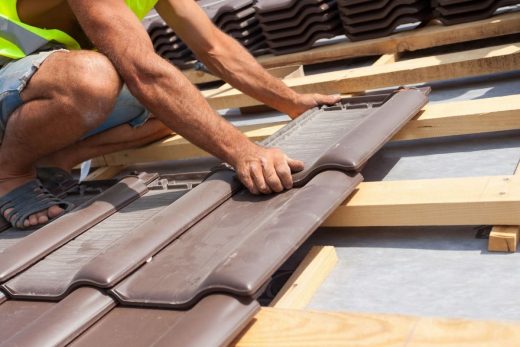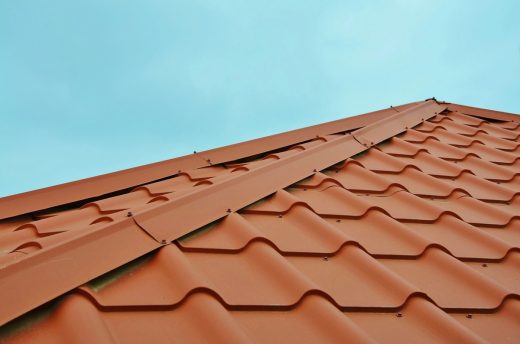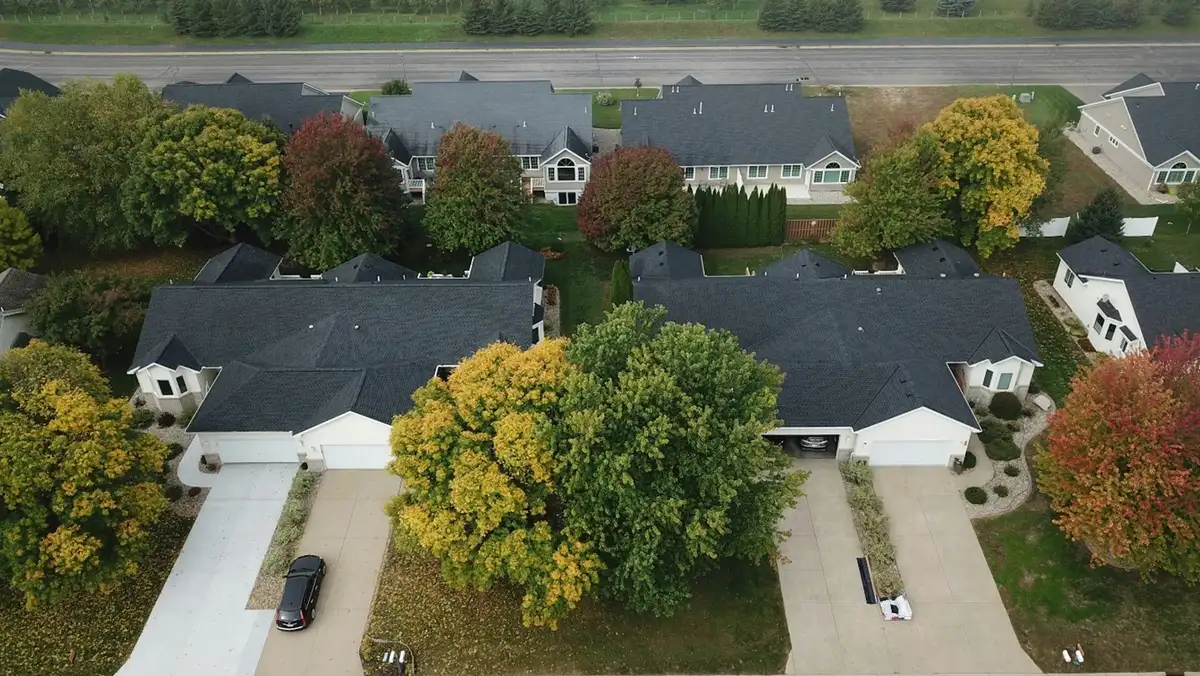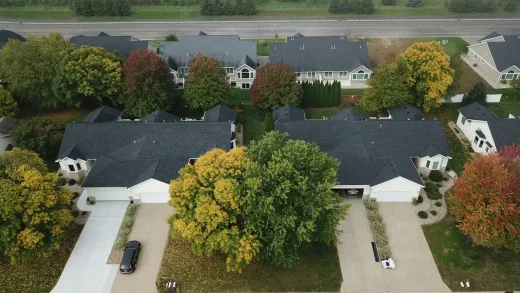Ageing roofs, understanding the lifespan of your roof and when it needs replacement, Online property roofing work advice
Ageing Roofs – Understanding the Lifespan of Your Roof and When It Needs Replacement
27 August 2024
The lifespan of a roof is influenced by various factors, many of which can accelerate its aging process. Weather conditions play a significant role in how long a roof lasts. For example, roofs in areas with extreme weather conditions, such as heavy rainfall, strong winds, or intense sunlight, tend to wear out more quickly. In Atlanta, for example, the combination of high humidity, heavy rain, and occasional storms can significantly impact the durability of a roof. These elements can cause materials to deteriorate faster and lead to issues like leaks, mold growth, and structural damage.
Understanding what causes a roof to age prematurely is crucial for homeowners who want to maintain the integrity of their homes.
Signs of an Aging Roof
Several visual indicators can suggest that a roof is nearing the end of its life. Curling or missing shingles are among the most obvious signs that your roof may need attention. Shingles that are curling or lifting can no longer effectively protect your home from the elements, making it more susceptible to leaks and water damage. Similarly, finding granules from shingles in your gutters or around your property is another sign of wear. These granules help protect shingles from the sun, and their loss indicates that the shingles are deteriorating.
Moss or algae growth on the roof is another sign of aging. While moss might seem harmless, it can retain moisture against the roof surface, leading to rot and further damage. Additionally, the presence of moss or algae can signal that the roof is not draining properly, which could indicate more serious underlying issues. Homeowners in Atlanta, where the weather includes high humidity and frequent rain, should be especially vigilant about these signs.
Hiring Professionals
When it comes to assessing and repairing an aging roof, hiring professionals is essential. An Atlanta Roofing Contractor can provide a thorough inspection of your roof and identify any issues that might not be visible to the untrained eye. These professionals have the experience and knowledge needed to assess the condition of your roof accurately. They can spot signs of damage that you might miss, such as subtle leaks, weakened areas, or hidden mold.
Attempting to assess or repair a roof on your own can lead to significant risks. Without the proper training, it’s easy to overlook problems that could worsen over time. For instance, a small leak might seem manageable, but without the right repairs, it can lead to major water damage and expensive structural repairs.
Moreover, climbing onto a roof without the right safety equipment and experience can be dangerous. Professionals can guarantee that repairs are done correctly and also carry them out safely. Trusting them with your roof’s maintenance and repairs is a wise decision that can prevent costly mistakes and extend the lifespan of your roof.
Understanding Roof Lifespan by Material
The lifespan of a roof varies significantly depending on the materials used. Each type of roofing material comes with its own expected lifespan and maintenance needs. For instance, asphalt shingles are one of the most common roofing materials, and they typically last between 20 and 30 years. However, their durability can be affected by weather conditions, such as the intense heat and humidity often experienced in Atlanta. On the other hand, metal roofs are known for their longevity, often lasting 40 to 70 years with proper care. They’re more resistant to extreme weather, which makes them a viable option for homeowners looking for a long-term solution.
Tile and wood roofs also offer different benefits and lifespan expectations. Tile roofs, made from materials like clay or concrete, can last over 50 years but are heavier and may require additional structural support. Wood shingles and shakes have a natural aesthetic appeal but typically last around 30 years and require more maintenance to prevent issues like rot and insect damage.
Choosing the right material for your roof is crucial in extending its lifespan, especially in a climate like Atlanta’s. The right choice will provide better protection against the elements and also reduce the need for frequent repairs and replacements.
Cost Implications of Delayed Roof Replacement
Delaying roof replacement can lead to significant cost implications. As a roof ages, it becomes less effective at protecting your home from the elements. Small issues, such as leaks or damaged shingles, can quickly escalate into major problems if not addressed promptly. Water damage is one of the most common consequences of delaying roof replacement. Once water starts seeping through the roof, it can damage insulation, walls, and even the structural integrity of your home. This type of damage often requires costly repairs, which far exceed the cost of a timely roof replacement.
In addition to direct repair costs, delaying roof replacement can also increase your energy bills. An aging roof with poor insulation and ventilation allows heat to escape in the winter and enter in the summer. In turn, this can make your HVAC system work harder to maintain a comfortable indoor temperature. This inefficiency can lead to higher energy costs over time.
Planning for Roof Replacement
Planning for roof replacement involves careful consideration of several factors, including timing, budget, and contractor selection. It’s essential to plan your roof replacement during a time of year when weather conditions are favorable, avoiding seasons with heavy rain or extreme temperatures. In Atlanta, the spring and fall months are often ideal for roofing projects due to milder weather. This allows for smoother installation processes and fewer delays so your new roof is installed efficiently and effectively.
Collaborating with a trusted roofing contractor is also key to a successful roof replacement. Working with professionals allows you to develop a plan that fits your budget and schedule while deploying high-quality materials and workmanship. A contractor can help you choose the best materials for your specific needs and provide guidance on how to maintain your new roof to maximize its lifespan.
Maintaining the integrity of your roof is crucial to protecting your home and avoiding costly repairs. Understanding the lifespan of different roofing materials, recognizing when it’s time for a replacement, and planning accordingly are all essential steps. By being proactive and working with a professional roofer, you can maintain the condition of your roof for years to come. Taking these steps preserves your home’s value and also gives you peace of mind.
Comments on this guide to Ageing Roofs – Understanding the Lifespan of Your Roof and When It Needs Replacement article are welcome.
Roofing Contractor
Roofing Replacement Posts
6 questions to ask when hiring residential roofing contractor

First Time Replacing Your Roof

The Benefits of Liquid Roofing
The Top Roofing Company For Your Business
Choose the Top Roofing Solution for your Home
Types of Roofing Materials: Explained
Building Articles
Residential Architecture
Comments / photos for the Ageing Roofs – Understanding the Lifespan of Your Roof and When It Needs Replacement page welcome





